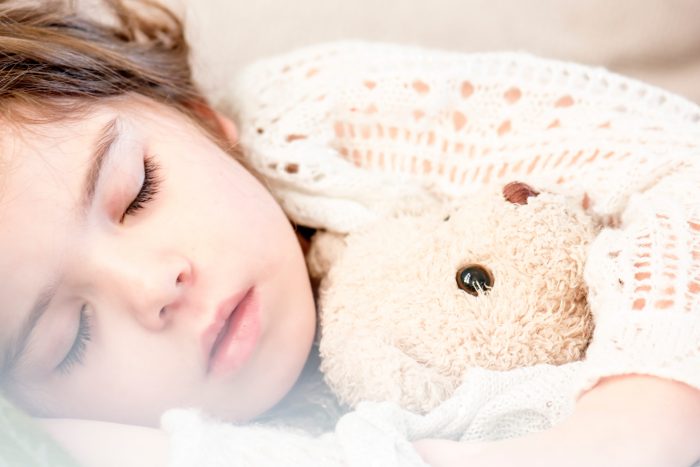
Unhealthy Light May be the Reason Why Your Kids Aren’t Sleeping
Putting your kids to bed is a battle, to begin with, but ensuring that they’re actually sleeping after you’ve tucked them in, raises just another problem to face. Well, what if we told you there are some contributing factors to why your child won’t sleep (other than the fact they’re just a normal kid who shows bedtime resistance)?
What if we told you there is actually a connection between light exposure and sleeping habits? We want to talk about “unhealthy” light and its effect before bedtime and have you consider some things to help your child sleep better.
Too Much Light

Let’s understand one thing: Light exposure prevents the secretion of melatonin, a hormone that naturally regulates sleep. Melatonin secretion naturally rises in the evening, causing the body clock to prepare for sleep. So, if a person is exposed to too much light in the evening, the melatonin in their bodies is suppressed. If they don’t encounter light exposure, their bodies are potentially able to secrete melatonin even earlier than their typical bedtime. Basically, we’re trying to tell you that too much light can impact sleep quality–furthermore, it can impact the duration of sleep, leading to other problems.
Additionally, children are even more affected by the correlation between light exposure and sleep because they see light more strongly than adults. According to multiple studies, preschool-aged children’s pupils are larger than the average adult’s, which allows more light to their retinas and stronger signals to their body clocks. So, as parents, you can’t fully understand how much light your child may actually be experiencing before bedtime, but you can avoid this problem by eliminating as much bright light as possible in the evening leading up to their bedtime. Of all the things to help your child sleep at night, this is the most crucial.
To determine whether or not your child’s melatonin response has been affected, notice if they’re tired and wired in the evening. Your child may give off signs of tiredness, but their body clock isn’t sending the appropriate signals to promote sleep. In this case, your child is probably popping right up out of bed making requests, sauntering in and out of the bedroom, etc. If this is the case, it’s your job as the parent to dim their environment. Turn their bedroom into a cave-like atmosphere to encourage sleep and naturally, they will be more prone to falling asleep.
Here are other things to help your child sleep:
- Remove night lights, alarm clocks, etc.
- Cover windows with blackout curtains to cover artificial light from street lights.
- Use red-toned lights in hallways and bathrooms in case they need to go to the bathroom in the night–but avoid blue or white light because this will disrupt their sleep.
- Keep the house cooler at night to facilitate better sleep.
- Use sound machines to help children stay asleep.
These tips and tricks are easier said than done–making a bedroom dark for an adult should be fairly simple (as long as you’re not tripping over objects), but most children fear the dark and find comfort from night lights. By transitioning away from night lights, your child will benefit from this change both presently and in long terms. If your child insists on a night light, keep them low and near the floor, for you don’t want anything directly shining into their eyes.
How Natural Light used to Dictate

Lack of sleep and “unhealthy” light exposure is a more recent problem compared to earlier ways of life. Now, it’s become even worse for children. Here’s why: the grand entrance of electric light in the 19th century was both negatively and positively received. But regarding sleeping patterns, it had a poor influence. Before people had pervasive lamps and light bulbs covering every surface of their homes, circadian rhythms (physical, mental, and behavioral changes that follow a daily cycle–primarily dealing with light and darkness) were dictated by natural light. It only made sense for people to wake when it became light outside, and to retire early as darkness came.
That being said, we don’t live in those times. Electric light has become a prevalent part of our world, whether we realize it or not. You can and should still use the gift of electric light, but be selective in considering what things to help your child sleep–like choosing what kind of light you want in your private home, for example. Make intentional choices about what kind of light is in your home, especially as this is a place you may spend most evenings.
——————————————-
To ensure a better night’s sleep, we believe in modeling natural light as much as possible here at Lit Living. Different lights can give off different emissions to mock the way the sun operates at different times of the day. By implementing this type of natural light in the home (rather than artificial light), your children are guaranteed a better night’s rest because their circadian rhythms will be more aligned with a daily cycle.
About Us
Here at Lit Living, we don’t only focus on the aesthetic of our lighting fixtures, but we really take into account which types of light are healthiest for users. Lit Living promotes hygge–the Danish idea that coziness and comfort lead to contentment and total well-being. Because we believe in this principle, we’ve structured our lighting systems around this idea to reduce stress and invite safety and wellness into the home.
Through different levels of brightness, angles, and the colors of light the sun gives off in a day’s worth, we’ve designed our lights to imitate the natural cycles of the sun resulting in a healthier and happier home. Essentially, the type of lighting you choose can create a more welcoming, joy-filled space for you and your loved ones. Find out how healthier light can make a difference in your home.
